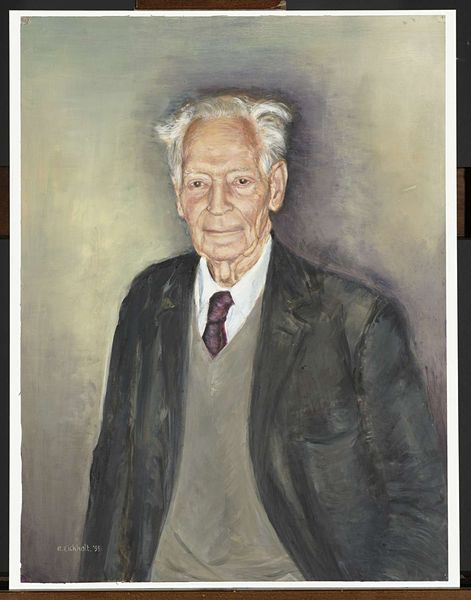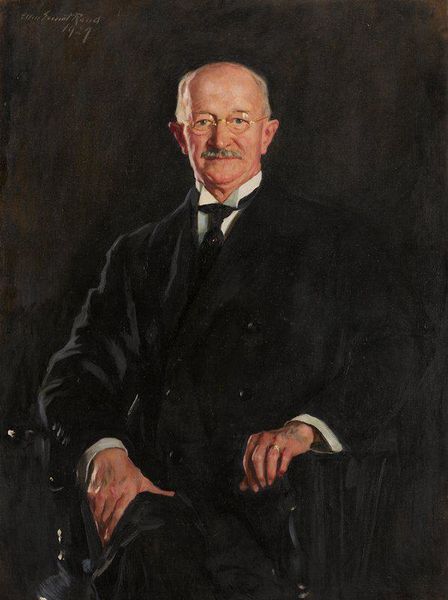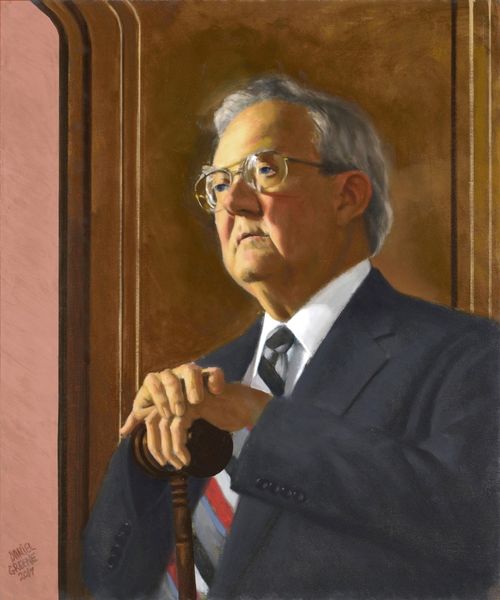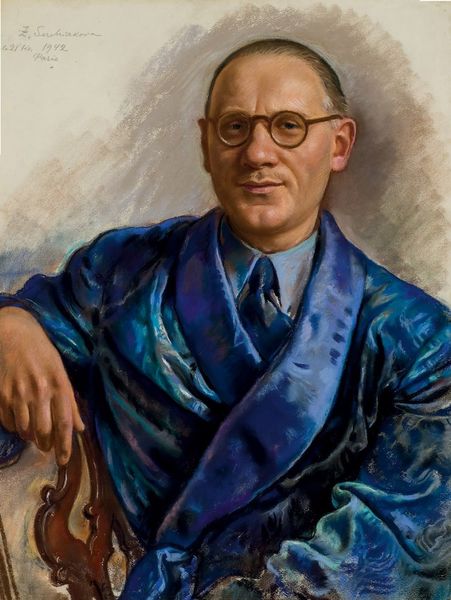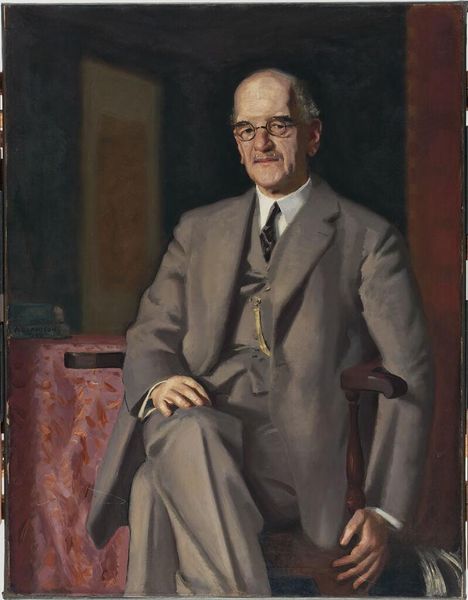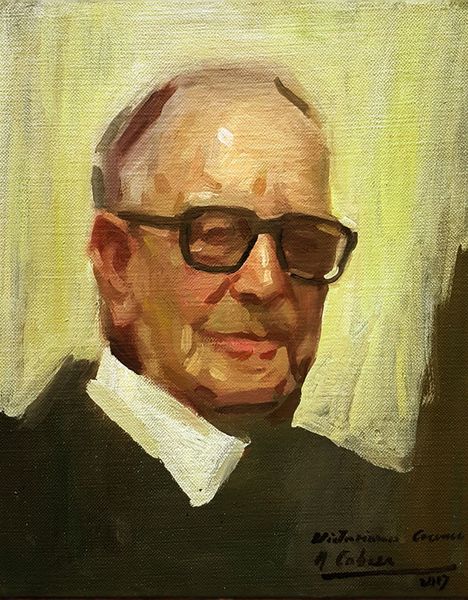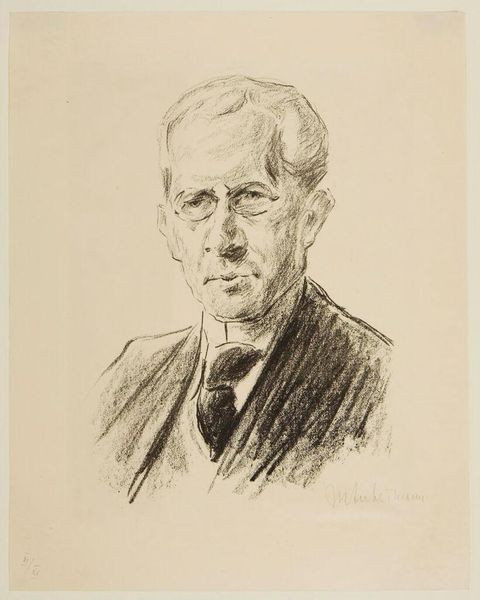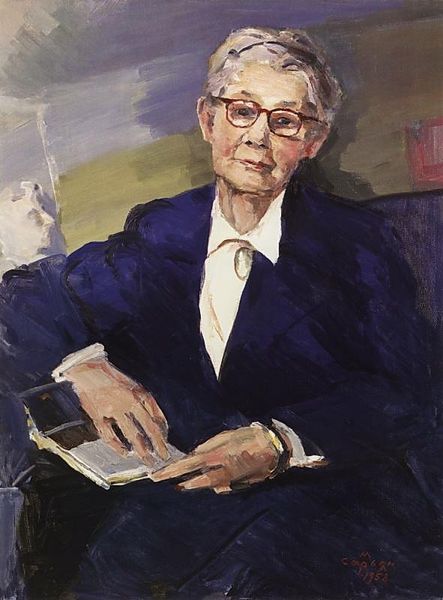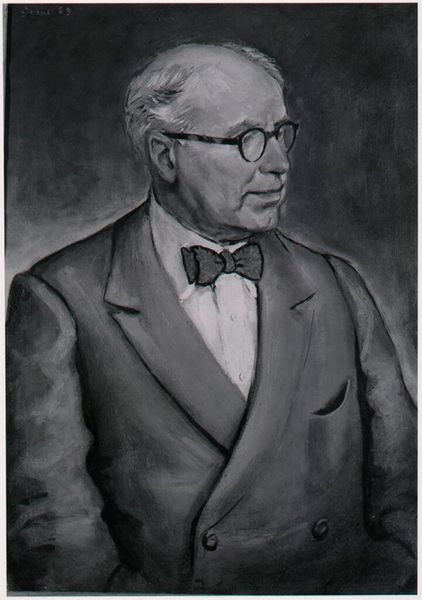
painting, oil-paint
#
portrait
#
figurative
#
painting
#
oil-paint
#
modernism
#
realism
Copyright: Modern Artists: Artvee
Curator: Here we have Norman Rockwell’s “Portrait of an Older Gentleman,” painted in 1929. Editor: The oil paint application feels rather hasty, or maybe “efficient” is the word, across this canvas. It gives me a very practical, working-man vibe, though the subject looks rather formally attired. Curator: Yes, Rockwell often infused his work with a sense of everyday life, even in his portraiture. The gentleman’s subtle smile and warm eyes radiate a kindly familiarity that defies any potential stuffiness from the suit. His glasses glint in the light, becoming symbolic windows into a kind soul. Editor: Look at how the light seems almost concentrated, pooling, across his forehead and cheeks, highlighting his expression lines. There’s no background to speak of, so all the attention is pulled straight to his face—the very human aspect, down to the perceived "flaws." It emphasizes labor of being human. I wonder about Rockwell's process. Did he aim for verisimilitude here or was this more a quick study, perhaps a commission piece handled with professional swiftness? Curator: Well, Rockwell's works frequently draw from archetypes and cultural touchstones, echoing traditional portraiture. The dark suit contrasts against his luminous face—it pulls my eye right to the light, almost creating a saintly aura. There's almost a sense of nostalgic yearning, too. He represents wisdom, experience, a certain kind of moral fortitude... Editor: True. But all that oil paint – think about it, ground pigments suspended in oil, applied to fabric stretched taut across a wood frame. Labor-intensive. Yet there is a sort of looseness, almost hurried finish... This materiality speaks of a time of rapidly shifting modes of art production in 1929. Even realistic portraits began reflecting abstraction by subtly showing process. Curator: An excellent point. Rockwell uses an established portrait formula to evoke not just a person, but an enduring symbolic role, one hearkenening to familial and communitarian values in turbulent times. The very ordinariness is almost mythic! Editor: It is tempting to see it as nostalgia but remember—every layer and stroke is material and process. Rockwell uses them both here to signify more than any symbolic weight would allow. Curator: An insightful reading! Ultimately, it leaves me pondering enduring cultural echoes that this gentleman reflects through the artist's particular hand. Editor: Exactly, a material transaction leaves us, generations later, debating context. Powerful, actually.
Comments
No comments
Be the first to comment and join the conversation on the ultimate creative platform.
